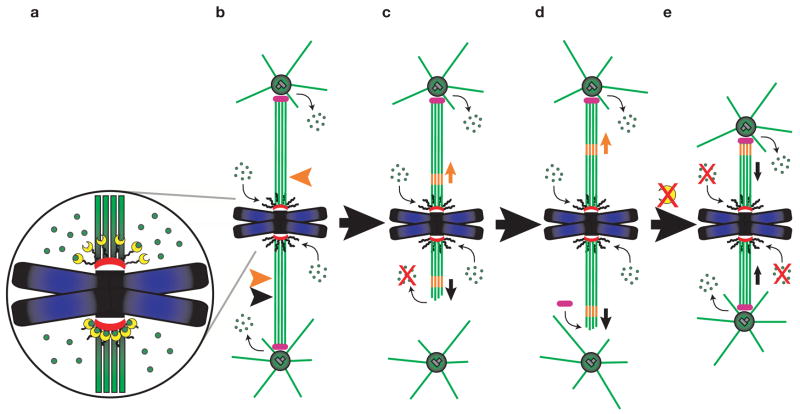Figure 4.
Schematic depicting the role of CLASP at kinetochores. (a) CLASP (yellow) mediates the incorporation of tubulin subunits (green) into kinetochore microtubule plus-ends at kinetochores. When a mature K-fibre is photobleached (top orange arrow b–d) the subunits move, or ‘flux’, poleward through the fibre and are removed near the poles. When a K-fibre is photobleached (bottom orange arrow in b) and then severed (black arrow) closer to the pole, the fibre re-grows towards the pole (c–d) by microtubule subunit incorporation at the kinetochore but not at the newly created microtubule minus ends, which are stable. Once the re-growing fibre matures, factors are recruited to its microtubule minus ends (d) (most probably Kinesin-13 family members such as KLP10A/Kif2a; pink) that allow for (and maybe power) subunit flux. In the absence of CLASP (e), the incorporation of subunits into mature K-fibre microtubule plus-ends is shut down, which inhibits flux. However, as microtubule minus-end depolymerization still occurs near the poles, the K-fibres shorten and the spindle collapses.

